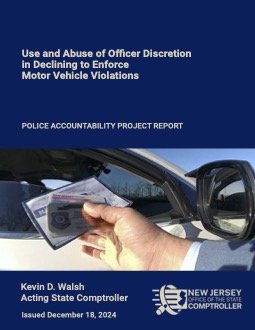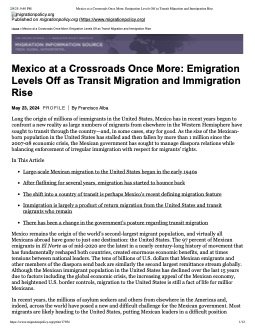By The New Jersey Office of the State Comptroller (OSC)
The New Jersey Office of the State Comptroller (OSC) examined over 500 motor vehicle stops conducted by New Jersey State Police (NJSP) that ended with no enforcement. OSC looked at body-worn camera footage of stops that are rarely, if ever, watched—stops where tickets were not given, arrests were not made, and no one was even ordered to exit their vehicle. Most of the traffic stops OSC reviewed started with the trooper briefly explaining the reason for the stop and requesting a driver’s license, registration, and insurance. But in more than one out of four stops reviewed, the motorist presented a courtesy card, asserted a personal relationship with a law enforcement officer, or even flashed a law enforcement badge. When that happened, the side-of-the-road interactions
between the motorists and the stopping troopers shifted, and in some cases, shifted dramatically.
Sometimes, the motorist boldly handed over a courtesy card, occasionally in lieu of driving credentials, and the stop resolved relatively quickly with the trooper offering some version of “you’re good.” Other times, a driver volunteered “my dad is a lieutenant” or “my best friend works at [insert name of any law enforcement agency]” and received remarkably solicitous treatment from the trooper. This was the case even when the drivers were stopped for dangerous traffic infractions, such as driving more than 100 miles per hour or suspected drunk driving. The most serious consequence the troopers imposed in these stops was advising the motorists that they left a voicemail message for the law enforcement officer named on the courtesy card or invoked as a friend or relative. In one instance of suspected drunk driving, the trooper also warned the driver to “stay off my highway,” after reminding him how bad things would be if he crashed under the circumstances.
OSC’s Police Accountability Project initiated this investigation in response to multiple reports that New Jersey law enforcement officers’ exercise of discretion in motor vehicle stops is often influenced by improper factors, such as courtesy cards given to or purchased by motorists. OSC reviewed more than 3,000 minutes of body-worn camera footage, which included 501 traffic stops conducted by a sample of NJSP troopers over a ten-day period in late 2022. In doing so, OSC found evidence of a two-tiered system in which motorists with ties to law enforcement—no matter how tenuous—were given preferential treatment.
Among the findings:
● Courtesy cards—which are given out by police labor associations and sold by private companies online—appear to be in wide usage and function as accepted currency. Of the 501 stops OSC reviewed, 87 motorists presented courtesy cards which came from municipal police departments, county and state agencies, as well as inter-state and out-of-state law enforcement agencies. They all appeared to be equally effective at getting motorists released without enforcement.
● Motorists who asserted personal relationships with law enforcement have similarly strong social capital that often has the same effect as a courtesy card. In ten percent of the stops, the motorist did not present a courtesy card but cited a relationship to a law enforcement officer and was able to evade any consequences, even for serious motor vehicle violations. In one stop, a driver was speeding 103 miles per hour. The trooper released her after she said her father was a lieutenant. Another motorist, stopped for tailgating, speeding, and
driving over the median in a tunnel, was released promptly after he cited a friendship with a law enforcement officer.
● Many active duty law enforcement officers were observed using their official government position to get out of a ticket. Some volunteered that they were law enforcement, some flashed badges, and in one instance, a trooper sitting in the back seat of a car offered up his badge number.
● Troopers’ decisions to grant preferential treatment to motorists who have courtesy cards or asserted close personal relationships with law enforcement seem to be having a discriminatory impact. White motorists were more likely to hold a courtesy card or assert a relationship to law enforcement. Of the 87 courtesy cards observed in the sample, for instance, 69 were presented by White drivers, while Black, Hispanic/LatinX, Asian, and other drivers presented a combined 18 courtesy cards.
● NJSP policy requires troopers to request and review driving credentials (driver’s license, vehicle registration, and proof of insurance) for all stopped drivers. Yet, drivers without courtesy cards or a close relationship with law enforcement were more likely to have all three driving credentials requested and verified by the trooper, more likely to have the trooper take the extra step of conducting a full motor vehicle lookup in the computer, and more likely to be given some form of a warning.
● An overall analysis of the full sample revealed racial disparities that went beyond courtesy cards. White and Asian drivers were less likely to have all three of their credentials requested and verified when compared to Black and Hispanic/LatinX drivers. And Hispanic/LatinX drivers who were stopped were generally subjected to a more thorough computerized lookup. Most striking, troopers conducted computerized lookups of Hispanic/LatinX drivers 65 percent of the time, while looking up White drivers only 34 percent of the time.
● Out of the 501 stops that resulted in no enforcement, 232 related to speeding. At least 80 of those stops were for 20 or more miles per hour over the speed limit. Speeding is one of the common causes of traffic fatalities.
In short, this two-tiered system of justice that provides differing treatment for those with law enforcement connections and those without is unethical, discriminatory, and fundamentally unfair. It also contributes to making New Jersey roads less safe. Traffic fatalities on New Jersey roads continue to rise, with fatal crashes at the end of November 2024 already well surpassing the number of fatal crashes from the prior year. Impaired driving and speeding are some of the leading causes of accidents. Millions of public dollars are allocated to law enforcement agencies throughout the state to prioritize safety
initiatives and adherence to traffic laws. Yet for some drivers, these priorities do not seem to apply.
For these reasons, and those set forth in more detail below, OSC makes 11 recommendations and has also made appropriate referrals. OSC’s findings also make clear that regular review of no enforcement stops could provide valuable insight into officer discretion and also could reveal why particular data trends persist, highlight the need for training or retraining and updates to policies, and ensure that the motor vehicle laws are being enforced fairly and equitably. While some of the drivers in this sample had courtesy cards or asserted relationships to law enforcement, many did not, and yet still avoided any consequences for often serious violations.
Trenton: New Jersey Office of the State Comptroller, 2024. 38p.





